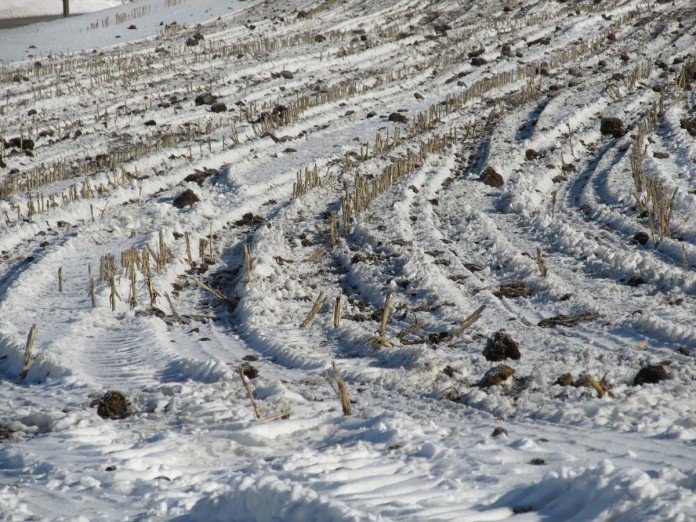By Glen Arnold
FINDLAY, Ohio — This past fall was particularly tough on livestock producers and commercial manure applicators trying to apply livestock manure.
Weather conditions were warmer and wetter than normal with the Ohio Agricultural Research and Development Center (OARDC) station at South Charleston, recording 32 days with measurable rainfall totaling 9.91 inches in November and December.
In these same two months, the OARDC station at Hoytville recorded 24 days with measurable rainfall totaling 6.04 inches.
The wet weather prevented many acres of cover crops being planted and has severely limited the number of days that field conditions were dry enough or frozen enough for manure application equipment to operate.
A substantial number of livestock producers across the state had to wait to apply manure as soon as farm fields were frozen enough to support application equipment.
Permitted farms are not allowed to apply manure in the winter unless it is an extreme emergency, and then movement to other suitable storage is usually the selected alternative.
This article is for non-permitted livestock operations.
In the Grand Lake St. Marys watershed, the winter manure application ban from Dec. 15 to March 1 is still in effect. Thus, no manure application would normally be allowed in January and February.
In the Western Lake Erie Basin (WLEB) watershed, the application of manure to frozen and snow-covered soils requires there to be a growing crop in the field. This could be a pasture, alfalfa, clover, ryegrass or a rape crop.
There must be enough vegetation visible to provide 90 percent cover of residue and growing vegetation — radishes and oats would not qualify as a growing crop as both are typically winter killed.
Manure can be applied to fields without growing crops if the manure is incorporated at the time of application or incorporated within 24 hours of application.
The rainfall rule for surface manure application in the WLEB is a weather forecast saying “not greater than a 50 percent chance of a half inch or more of rain in the next 24 hours.”
It is advisable to print out the weather forecast when you start applying manure so you have the needed proof if an unexpected storm drenches the area.
The most commonly accepted website for this forecast is weather.gov.
Although not required by law, winter manure application should follow the NRCS 590 standards, which limit solid manure application amounts to five tons per acre and liquid manure application amounts to 5,000 gallons per acre.
These have 200-foot setback distances from ditches, streams and creeks and must be on slopes of less than 6 percent and less than 20-acre areas in size without additional buffers.
For liquid manure applicators, examine fields for tile blowouts. Monitor tile outlets before, during and after manure application and any other situations that might allow manure to reach surface waters.
(Arnold is the OSU Extension Field Specialist for Manure Nutrient Management. This article first appeared in the Jan. 9, 2019, Ohio Beef Cattle Letter, a publication of the OSU Extension Beef Team.)










